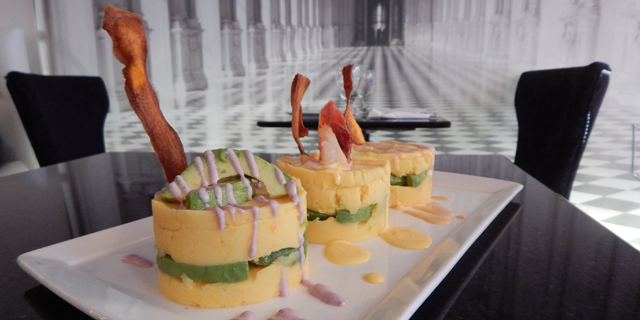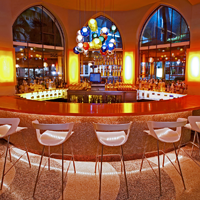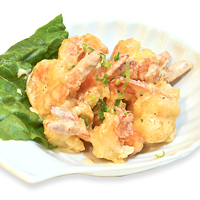Forget Brazil (for now). Disregard Argentina (if you can). The World Travel Awards named Peru “South America’s Leading Culinary Destination” – for the second year in a row. Just as they did in 2012, the powers that be believe that Peru, with its amazing natural selection of flora and fauna all ready to be turned into lomo saltado and tiradito, is the clear go-to for the on-the-go epicure.
Other organizations and media outlets such as What’s On followed suit, celebrating the cuisine in countries as far-flung as Dubai and coaxing celebrated chefs such as Alain Ducasse to make comments. “The Peruvian culinary scene is incredibly vibrant. The country benefits from biodiversity, while Gaston Acurio and many young chefs are exploring the region’s culinary traditions, from ceviche to grilling techniques,” Ducasse says on The Braiser. “Peru has a clear vision of its future in terms of both cuisine and sustainable development… Tomorrow, Peru will become one of the leading actors on the global culinary scene.”
In Miami, tomorrow is today.
Given Miami’s role as a Latin American gateway for emigrants, Peru’s unique causas and chifa (Peruvian-influenced Chinese food) first had a starring role in the city in the early-to-mid-1990s, after the leader of the country’s terrorist group Shining Path was captured and citizens felt free to travel and move. Several of the restaurants serving such fare are now considered mainstays, among them Chalan on the Beach, which settled in the heart of South Beach during that region’s initial spurt of renovation, and Chifa du Kang on Southwest 40th Street. Still, the majority were located in Spanish-speaking areas such as Calle Ocho, Sweetwater, Tamiami and Westchester. And most, like Aromas del Peru or Salmon & Salmon, were mom-and-pop shops or cafeterias adjoined to fish markets, heavy on home-cooking materials and tastes but light on atmosphere.
The second wave of Peruvian restaurants in Miami, many of which highlight ceviche, a dish perfectly suited calorie- and flavor-wise to the climate and inhabitants of South Florida, has seen the up-scaling of both cuisine and décor. It began in Coconut Grove with the trend-wise Jaguar Ceviche Spoon Bar & LatAm Grill and continues moment to moment with openings such as SuViche in downtown and Wynwood, Ceviche and Grille in North Miami and Cholo’s Ceviche and Grill in North Miami Beach.
A third coming features Peruvian fusion, which broke whatever geographical barriers remained. The now-defunct La Cofradia in swanky Coral Gables, from which one of the partners later opened Jean-Paul’s House (now in transition to a new location), highlighted just how high-end and innovative Peruvian fare can be. The French-Peruvian Juvia, one of the most popular restaurants on Lincoln Road, took dining quality and matched it to design. The rooftop restaurant even won a 2013 James Beard Award for its décor. It only goes to convince us even more – as if we needed convincing – that Peruvian fare is indeed the South American equivalent of French gastronomy, and deserves settings that match.
Click on for our favorite Peruvian hotspots!…
[pagebreak]Ceviche Piano, 100 SE 2nd Street, 305-577-4414
The very charming Ceviche Piano Restaurant epitomizes the marriage between fare and décor, with a white grand Weber piano as backdrop for heightened fare like ricotta-pear ravioli glazed with passion fruit. Not so much piano bar as it is dinner in Liberace’s living room, the petite establishment is done up in shades of pewter and white, and embellished everywhere possible with dripping crystal. It’s located in the Miami Towers Building and caters to a well-dressed business clientele that expects and receives uber-courteous service. A glance at both menu and neighboring tables informs newcomers about the amount of mouthwatering that should be done: sophisticated causas that appear more like terrines; ceviches that bring in multiple textures of seafood and fish; and main courses like filet mignon plated on a bed of mashed potatoes, rimmed with a piquant “Peruvian” demi-glace and topped with a crown of crisp, fried shrimp.
The brainchildren of brothers Christian and Frank Escalada, these twin establishments are indeed divine. Executive chef Christian, a graduate of Cenfotur in Lima Perú, also worked for globally acclaimed chef and cookbook author Gastón Acurio. His talents are on display via a cooked menu but also, and especially, the restaurant’s namesake – nearly two dozen ceviches and tiraditos. Beginners are welcome to munch on the traditional fish lightly marinated with lime, onion, cilantro and limo chile, garnished with choclo and sweet potato, while experts might prefer the ceviche that utilizes fish and techniques from various Peruvian regions or makes use of ingredients such as olives. We’re particulary fond of the chef’s specialty, which involves the customer’s choice of aquatic protein, avocado and mango, as well as the tiradito en tres salsas: rocoto cream, aji amarillo cream and classic white cream, served with sweet potato and corn. Another plus? A children’s menu.
The sibling to the highly successful SUSHISAMBA dromo on Lincoln Road, SUSHISAMBA Coral Gables opened in 2013 in the gorgeous Westin Colonnade Hotel. Noted for its fusion of Japanese, Brazilian and Peruvian cuisines, the vibrant, hip and trendy restaurant is now under the direction of executive chef David Sears, who was most recently impressing palates at Temple Orange at the Ritz-Carlton West Palm Beach. The menu offers ever-changing assortment, including samplers of innovatively plated ceviches (spelled “seviches” here); large plates (perfect for sharing!) of Chicken Teriyaki with aji amarillo, purple potato mash and crispy shallots; vegetarian-friendly Roasted Cauliflower with Campari tomato, toasted almonds and huancaína sauce (get a side of steamed quinoa to complement); and foamy pisco sours, garnished with a ring of herbs and a line of spice. Whether you’re meeting for business or pleasure, SUSHISAMBA Coral Gables is the place to make the multicultural date.
Love causas? Adore rocoto? No doubt you’ll appreciate them even more, as we do, with a touch of Latin-American verve. At proprietor Adrian Arguelles’s Miyako Doral, Japanese fare is married with Latin American ingredients – chief among them, Peruvian. Here, the classic Peruvian causa, along with rocoto, is remade into nouveau-Japanese fare a la the “Causa Roll.” This admittedly hefty beauty comprises Peruvian yellow mashed potato, aji amarillo and lime juice. It’s then stuffed with tuna tartare and topped with avocado and rocoto. If that sounds too filling, consider the lighter-tasting “Rocoto Shrimp” roll, which is lightly fried shrimp tossed with homemade rocoto. The menu also offers items beyond the Peruvian scope – as well as special “sushi nyotaimori” or “body sushi” nights where sushi and sashimi is plucked from the curves of a woman’s body, putting new meaning in the words “culinary temptations” – but in whatever Latino-Japanese direction you choose to go here, you’ll no doubt be pleased.
Modern, urban and affordable, Pollos & Jarras is a downtown operation that features organic rotisserie chicken as well as numerous barbecued and grilled meat dishes that appeal to the inner Hispanic in all of us. Featuring plank wood floors, colorful graphic signage and a bricked bar, Pollos & Jarras is run by native Peruvian chef, Juan Chipoco, and his business partner, sous chef Luis Hoyos, who together also own and operate the wildly popular CVI.CHE 105, located two doors down. Don’t let the just-marinated fresh fish and organic poultry fool you, however. While the place is healthier than most, you can still do a lot of artery damage here, especially if, like we do, you order frequently from the “Long Live Potatoes and Delicious Yucca Sticks,” “Los Postres” and “Side Dishes and Drinks” portions of the menu. What can we say? Dishes like yuquipollo (wok-seared chicken over fried yucca sticks) and beso de ñusta (organic Peruvian quinoa cream, covered in caramel sauce), along with a chilled bottle of Cusqueño, certainly have our name on them.




![Making Mealtime Matter with La Familia: Easy Sofrito [Video]](https://thelatinkitchen.com/wp-content/uploads/2015/10/sofrito-shutterstock__0-500x383.jpg)
![Easy Latin Smoothies: Goji Berry Smoothie [Video]](https://thelatinkitchen.com/wp-content/uploads/2015/12/goji_berry-shutterstock_-500x383.jpg)
















![Fun and Fast Recipes: Fiesta Cabbage Salad [Video]](https://thelatinkitchen.com/wp-content/uploads/2015/11/fiesta_cabbage_slaw-shutterstock_-500x383.jpg)









